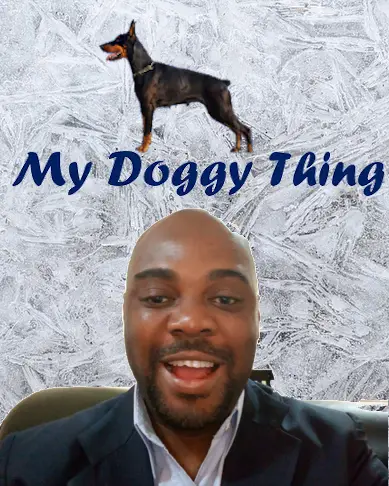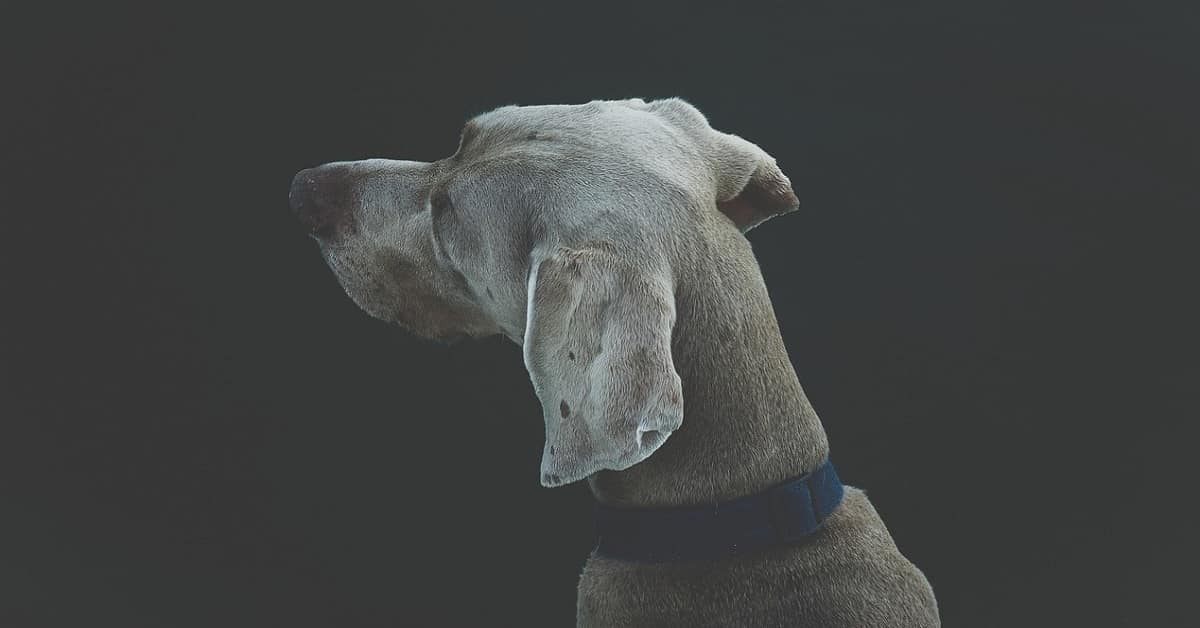For some time now, it seems your dog has gotten into a strange habit. You find him or her starring at the wall for long periods without pause. Sometimes you see them pressing their heads firmly against the wall or other solid objects for no just cause. In the beginning, it might look cute and all but as time goes on. Your instinct tells you that this behavior is not normal.
You start to wonder, why has my dog developed this strange behavior? Why this sudden shift? What can I do? Is it too late to help my pet?.
For you to help your dog, you must first understand why your pet is suddenly behaving like this.
Your dog’s new behavior would be as a result of the following causes:
i)Unknown activity in your walls
ii)Attention seeking
iii)Partial Seizures
iv)Cognitive dysfunction Syndrome
v)head pressing
vi)Stroke
vii)Vestibular disease.
Usually, the best way to manage or treat this behavior is to identify and deal with the particular cause affecting your dog. Some require no medical attention but others require your keen observation in order to assist your vet doctor to give the best possible treatment for your dog.
.
.
So let’s dive in and analyze each of the causes and possible treatment.
i) Unknown activity in your walls.
It is not a secret that our dog’s senses hearing, smelling and others are heightened. Much higher than our senses.
Most of the time, your dog is aware of a member of the family coming into the house much earlier than we do. This is obviously a wonderful thing to have and sometimes our favorite pets want to share this with us, but we don’t speak dog language so communicating with us seems difficult here.
Many things are happening around our homes and in our walls, but because of our limited senses. We are not aware that these things are happening. Things as minute as termites building up in a particular section of your house, or ants building up a colony to even unwanted animals trying to burrow into a section of your wall like a snake. These are things that we are not specially adapted to notice.
Mind you, it doesn’t have to be something very dangerous. The main thing here is that something is happening at that section of your wall (no it’s not a paranormal activity as some people would try and lead you to believe). It is something that you overlook but is happening there.
The best way to address this cause is to sit next to your dog and try to be very observant of any activity going on in that part of the wall. If it’s a mouse, cockroaches, or termite infestation, then you might need to call in pest control to deal with it.
But if it is something minor, like the humming sound of a washing machine or something of that nature, then you might as well leave your dog alone to enjoy the sound or engage him in another activity. It’s amazing what your dog can get involved in due to boredom.
Make sure you involve your dog in more physical activities. It will go a long way to reduce his or her facing the wall.
ii) Attention seeking.
In this case, it is very obvious that your dog is passing through boredom or lack of attention from you. You find yourself sitting next to the dog, trying to analyze what is happening, but at the end of the day after extensive investigation. You find out that nothing is happening there.
In this instance, it’s likely that your dog only faces or stares at the wall when you are around. He or she is only doing this to get your attention. Most of the time even without us realizing it, we fall for the trick which reinforces it to your dog that the best way to gain your attention is to stare at the wall for a long period whenever you are around.
What can you do? In addition to making sure nothing is happening in your walls, try and build a schedule for some form of physical activity between you and your dog. Taking a walk (which is a form of socialization for your dog and has many other immense value to him apart from handling boredom) and playing games (fetch) etc. Even one on one obedience classes can go a long way in relieving your dog of this attention-seeking syndrome and make him start acting normally around you.
iii) Partial Seizure
Seizures are usually linked to epilepsy. Normally in epilepsy, there is a violent and uncontrolled movement in your dog making him or her to shake repeatedly for a few seconds or minutes. But in this case of partial seizure, also referred to as focal seizure. There is no violent movement associated with it.
This type of seizure in a dog occurs when a small area of nerve cells in his brain misfires. To break it down, at that very moment the dog is in a highly confused state even though he is conscious. Some indication of your dog undergoing a partial seizure would look like the list below:
a) Your dog facing the wall
b) Slight twitching of your dog’s body
c) Head curved to one side
d) One of the limbs shaking but not very visible
e) Your dog trunk curved to one side.
There are many things that can lead to a partial Seizure such as a direct hit to your dog’s head, tumors, brain infections, etc but the main thing here is if you notice any of the indications above the best thing you can do is to start talking calmly to your dog. Whatever you do at this moment, please do not touch the dog as he or she is not in full control of her reflexes and can bite you at this stage. These episodes do not last long (some few seconds, worst-case scenario, less than 5 minutes).
When your dog looks like they have gotten control of their consciousness, you can touch them reassuringly. And contact your vet doctor immediately. It would be likely that your dog would receive a full body scan, if not some prescription from your vet would do.
iv) Cognitive dysfunction Syndrome.
This cause is very similar to Alzheimer’s in humans. CDS whose full acronym should be Canine Cognitive Disfunction Syndrome is common in senior dogs (You can call then elder citizens “wink”). Due to the fact that more and more dogs are living longer than they used to. Most of these senior dogs end up displaying symptoms of Dementia or going senile. The sad thing here is that CDS goes undiagnosed in most senior dogs because the symptoms for identifying it is a bit tricky.
Most vet doctors depend on the DISH acronym for diagnoses. In a nutshell D stand for disorientation, which is keeping track of changes in how the dog interacts with his or her environment as compared to before. I stands for interaction, which has to do with how the dog interacts with people currently. S stands for sleep which has to do with changes in the dog’s sleep patterns as compared to before and finally H is deviation from previous house training rules that the dog used to observe.
The problem here is that dogs with Canine Cognitive Dysfunction Syndrome do not display all these symptoms at once. You may notice that in addition to facing the wall, your senior dog now walks around aimlessly or easily gets stuck in corners in the house.
Like all things that come with age, there is not much treatment for this, but the best thing you can do for your Senior dog is to increase mental stimulation activities. (Much like retraining your dog is house obedience rules but with less punishment for defaulting, your dog is old now)
Regularly scheduled visits to your vet doctor is key here. You will properly be given drugs to help manage your dog’s anxiety and a change in his diet (likely diets rich in antioxidants). That naturally is for your vet to advise.
v) Head pressing.
As this also has the features of the symptoms for Canine Cognitive Dysfunction Syndrome. They are usually assumed to be the same, but they are not. For starters head pressing is not limited to senior dogs. As with the other causes, your dog is facing or just starring at the wall, sometimes he uses the wall as a support for the head, indicating some form of weakness as if he or she cannot stand on their feet.
This clearly is an indication of some form of neural damage in your dog. Some of the symptoms that would accompany this behavior would be reduced reflex actions, challenges with identifying objects, compulsive pacing, no indication of scratching an itch even though the body is on the wall, etc.
Some of the causes that can lead to head pressing are poisoning, brain or body tumors, canine distemper virus, cancer of the nervous system, Neurological disease, and trauma just to mention a few.
There is really not much you can do for your dog here apart from taking them to the vet. Proper diagnosis of the symptoms and cause by your vet would be done and the best course of action would be advised.
vi) Stroke.
Most people don’t know this but dogs too can suffer from stroke. For medical practitioners, a stroke can be defined as the loss of blood flow to some parts of the brain, which eventually leads to neurological damage. For dog parents, it is having a dog that is in a near vegetable state. Unable to respond to basic calls and instructions.
One of the early signs of stroke is your dog facing the wall. Also, all signs exhibited during partial seizures and Canine Cognitive Dysfunction Syndrome can all lead to a stroke. Strokes are also very common in senior dogs.
As Stroke can only be diagnosed medically, your best option is to take your dog to a vet doctor immediately he exhibits any of the symptoms for the other causes above. A Stroke would usually be a severe form of health issues based on the list above not being addressed properly.
vii) Vestibular disease.
Also called idiopathic vestibular disease is very common in senior dogs. I added it here because we pet parents also need to know that not all Stroke symptoms actually lead to stroke. The idiopathic vestibular disease mimics all the symptoms of a stroke but is not actually a stroke.
Some other symptoms would be acting dizzy, vomiting, head tilting, etc. The basic thing here is to get your vet involved immediately.
I believe I have been as extensive as I can be in answering the question “why does my dog face the wall”. I wish you the best with your beloved dog.

Hi, I am Charles Nwankwo Editor-in-Chief, Mydoggything.com. Gleaning from Professional Dog Trainers, behaviorist, Registered Veterinarians, and Breeders. We are passionate about making dog care easy for you. My job is to make sure that you get the best-updated dog care information to understand and take care of your dog or dogs.
